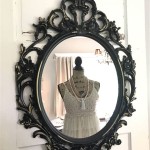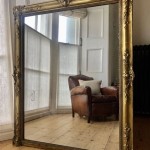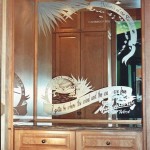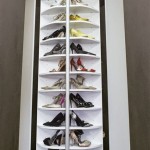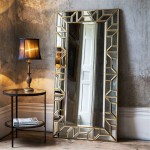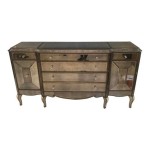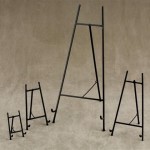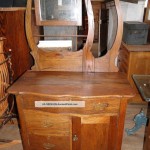What Size Should a Mirror Be Over a Sofa?
Selecting the right size mirror to hang above a sofa can significantly impact a room's aesthetic. A mirror that is too small can appear lost and insignificant, while one that is too large can overwhelm the space. Achieving visual harmony involves understanding key proportions and design principles.
A fundamental rule suggests the mirror should be roughly two-thirds to three-quarters the length of the sofa. This creates a balanced look, ensuring the mirror complements the sofa without dominating the wall space. For example, a seven-foot sofa would ideally be paired with a mirror between 4.6 feet and 5.25 feet wide. This guideline provides a starting point, and adjustments may be necessary based on the specific mirror and sofa styles.
Height is another crucial consideration. The mirror's bottom edge should typically hang approximately eight to ten inches above the sofa's back. This spacing provides a comfortable visual buffer and prevents the mirror from feeling crowded. Higher ceilings may permit slightly greater distances, but maintaining a clear connection between the sofa and the mirror is important.
The shape of the mirror also influences its ideal size. A round or oval mirror hung above a straight sofa can soften the lines and introduce an element of contrast. In these cases, the diameter of the mirror should generally follow the two-thirds rule, referring to the sofa's width. A square or rectangular mirror, on the other hand, can reinforce the sofa's linear form. These mirrors should adhere to the width guidelines mentioned earlier.
The frame of the mirror plays a role in perceived size. A thick, ornate frame can make a mirror appear larger than its actual dimensions, while a thin, minimalist frame can create a more subtle presence. When considering the two-thirds rule, it’s important to account for the frame's width. Measuring the outside dimensions of the framed mirror ensures a more accurate fit.
The overall scale and proportions of the room should also inform mirror selection. In a smaller room, a larger mirror can create an illusion of expanded space by reflecting light and adding depth. However, an excessively large mirror in a compact room can feel overwhelming. In larger rooms, smaller mirrors might appear too diminutive and fail to make a visual impact. Carefully assess the room's dimensions and choose a mirror size that feels proportionate.
Existing wall décor and furniture should be factored into the decision-making process. If other artwork or decorative elements are present on the same wall, the mirror should complement these pieces without creating visual clutter. Consider the vertical and horizontal spacing between items to ensure a balanced and harmonious arrangement. Avoid overcrowding the wall, allowing each piece sufficient breathing room.
The purpose of the mirror also influences size considerations. A primarily decorative mirror can be smaller and more ornate, serving as a focal point or accent piece. A mirror intended for functional use, such as checking one's appearance before leaving the house, should be large enough to provide a full-length reflection. Clearly defining the mirror’s intended function will guide the selection process.
Beyond size considerations, the style of the mirror should harmonize with the overall décor of the room. A modern, minimalist mirror might look out of place in a traditionally styled room, while an ornate, antique mirror could clash with a contemporary setting. Consider the existing furniture, color palettes, and decorative elements when selecting a mirror style to ensure a cohesive and aesthetically pleasing result.
Experimentation is key to finding the perfect mirror size. Before committing to a purchase, consider using painter's tape to outline different mirror sizes on the wall above the sofa. This technique provides a visual representation of how various sizes and shapes will appear in the space. It also allows for adjustments and fine-tuning before making a final decision.
Consulting interior design resources, such as magazines, websites, and design blogs, can offer further inspiration and guidance. Observing how mirrors are used in professionally designed spaces can provide valuable insights and help refine personal preferences. Ultimately, selecting the right mirror size is a matter of achieving visual balance and creating a harmonious and aesthetically pleasing environment.
Careful consideration of these factors will ensure the selected mirror complements the sofa and enhances the overall aesthetic of the room. By prioritizing proportion, scale, and style, a well-chosen mirror can become a focal point, adding both functionality and beauty to the living space.

How To Pick The Right Size Mirror Antique Glass Ltd

How To Choose The Right Decorative Mirror

Mirrors Over Sofa Design Ideas

How To Choose The Perfect Mirror Velvet Karatzas Interiors Atelier

Mismatched Mirrors Over Sofa Transitional Living Room

Console Tables And Round Mirrors A Perfect Combination

How To Pick The Right Mirror For Your Entryway Gem Picker

Round Black Mirror Over Heather Gray Couch Transitional Bedroom

How To Pick The Right Size Mirror Antique Glass Ltd

20 Incredibly Clever Ways To Decorate With Mirrors In A Small Living Room Michael Helwig Interiors

